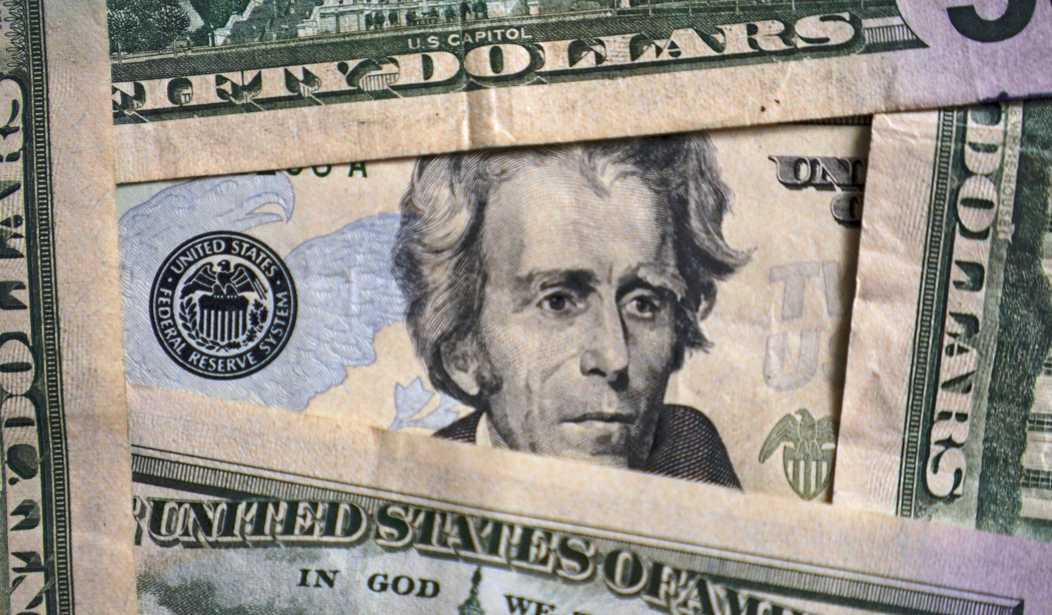Throughout history, debt-ridden nations have not fared well. It’s quite easy to understand why debt-addled nations inevitably collapse under the sheer weight of their outstanding obligations because eventually servicing debt payments on such a large sum eats up a significant portion of national spending, making the situation progressively worse.
It is also true that as interest payments on the national debt become a greater percentage of annual spending, borrowing more money and kicking can down the road becomes an enticing proposition for politicians who are less concerned with creating an environment for future prosperity than they are with extracting as much as they can from a sinking ship.
Sadly, the United States, the greatest nation on earth, is teetering on the brink of national insolvency. Although pundits have been ringing the alarm bell on the state of the nation’s indebtedness for years, we are truly approaching the point of no return.
Consider.
Very soon, the U.S. national debt will surpass $35 trillion. As of now, each U.S. taxpayer would have to fork over nearly $267,000 to pay down the national debt.
However, this amount continues to increase every second of every day because the federal government continues to run enormous deficits on an annual basis. So far, in 2024, the federal deficit is approaching $1.9 trillion.
Unfortunately, according to the Congressional Budget Office (CBO), $2 trillion annual deficits are the new normal. In fact, by 2034, CBO estimates the annual deficit will reach $2.8 trillion. Keep in mind, this is if Congress initiates no new spending measures over the next decade, which is about as likely as me fulfilling my dream of joining the PGA Tour.
Recommended
In 1980, the U.S. debt to GDP ratio stood at a healthy 34 percent. Today, it has ballooned to 123 percent. According to the Penn Wharton Budget Model (PWBM), “U.S. debt held by the public cannot exceed about 200 percent of GDP even under today’s generally favorable market conditions.”
Moreover, PWBM notes, “the United States has about 20 years for corrective action after which no amount of future tax increases or spending cuts could avoid the government defaulting on its debt whether explicitly or implicitly.”
Now, for the really bad news.
The total amount of U.S. debt, which takes into account federal government debt, household and business debt, as well as debt held by local and state governments, rings in at an inconceivable $101 trillion. As of this writing, this colossal figure includes $25 trillion in total personal debt and $1.3 trillion in credit card debt.
And then there are the unfunded liabilities. As of now, the federal government has an absolutely mind-boggling $217 trillion in total unfunded liabilities on the books. The top two unfunded liabilities are Social Security’s $27 trillion and Medicare’s $41 trillion. Because Americans are living longer and therefore will be on these programs even longer than actuaries initially estimated, both of these programs are likely to become even more insolvent as time goes on.
At this point, you may be wondering how the United States has not gone bankrupt already. The simple answer is the government has accelerated money printing like never before in our nation’s history.
In 2000, the M2 money supply, which measures the total number of dollars in circulation, was $4.8 trillion. Today, it has exploded to $20.8 trillion. No wonder inflation is so persistent; the U.S. government has resorted to borrowing and printing more dollars to cover its mountain of debt.
Now, for the really, really bad news.
In four years, the national debt will balloon to more than $46 trillion. The debt to GDP ratio will soar to 148 percent. Annual interest payments on the debt will exceed $3.9 trillion. Total unfunded liabilities will reach $295 trillion. And, for the cherry on top, Americans will be carrying more than $28 trillion in personal debt.
Don’t forget, these figures are accurate only if Congress authorizes no new spending programs over the next four years. It is almost assured that these numbers will grow worse as Congress increases spending over the interim.
So, is there any room for optimism? Can the situation be reversed? Or, is it too late?
Fortunately, it is not too late. There still is ample time to turn the situation around. First and foremost, we must demand that Congress rights the ship and balances the budget in the short-term. Second, we must demand that Congress develop a long-term plan to begin paying down the debt. Third, we the people must learn to live within our means, as well.
Although this sounds like a Herculean lift, it need not be. If we were to cut spending back to 2008 levels, we could solve the situation in a timely manner. The only question is: Do the American people have the temerity and the tenacity to do so?
Chris Talgo (ctalgo@heartland.org) is editorial director at The Heartland Institute.

























Join the conversation as a VIP Member